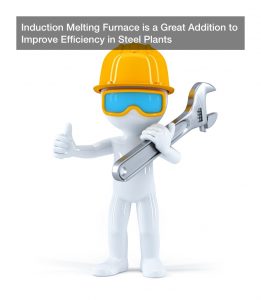
People in various professionals use different tools, equipment and processes to get their work done. As an expert, if you don’t have the tools, or if they are old, blunt or damaged, your job may be on the line.
Some professionals require heavy and high-value machinery. Meeting the acquisition and replacement costs for the same isn’t easy. Therefore, maintenance is key in repairing or bringing these machines back to their former glory. But how do you do this? Through induction hardening.
What Is Induction Hardening?
It is a form of heat treatment. In this process, steel or its alloy passes through an induction heating equipment, followed by quenching.
After this, steel goes through a transformative process to increase its hardness. This happens because a harder surface is created on the exterior while the core microstructure doesn’t suffer any effect. In short, induction hardening improves metal’s usable life by improving resistance to wear and tear.
The process of hardening metal by induction is quite popular due to its affordability. Additionally, it makes the metal stronger than it was before.
Understanding the Hardening Process
The process starts by placing the metal that needs hardening inside a copper coil. Then the alternating current is applied to start the heating process. The temperature on the outer metal surface rises to the transformational range. The range is dependent on the metal melting furnace and the metal you’re heating. Once the metal part reaches the optimum temperature range, quenching is done which quickly cools the metal.
After quenching, the metal goes through a tempering process. Tempering is a low-temperature heat treatment process that helps the metal part get to its toughness ratio. In simple terms, treating steel via tempering increases toughness while reducing its hardness.
The hardening process is controlled, simply, by adjusting the frequency of the coil current or induction’s machine electrical power output. The thickness of the heated surface is indirectly proportional to the frequency of AC that you apply. Therefore, a higher frequency will give thinner skins. However, case hardening steel surface improves its wear resistance without affecting its durability.
The Common Metals for Induction Hardening
The process is used on metals like steel (stainless, carbon, alloy) ductile iron, malleable iron, and cast iron. Some metal items that benefit from this hardening process include power train components, engine components, shafts, suspension components, stampings, axles, gears, and spindles.
Almost all metal parts that require hardening are subjected to heavy usage or loading. With this, the induction process hardens the metal to boost its ability to withstand normal use. That explains why nearly 50 percent of steel in the world ends up in the building and infrastructural projects.
What Are the Advantages of This Process?
The hardening process makes it easier for users to assert their control. The steel melting induction furnace allows a multitude of applications, like the manufacture of axles and steel shafts. Spare parts that come from this process are useful in different industries.
The induction furnace machines require minimal space requirements. The reason being the manufacturer can incorporate or integrate them with the manufacturing process. Unlike surface hardening surfaces, you don’t need to keep the induction melting furnace running.
Induction melting allows you to save on energy and costs. Remember, you’ll only be heating a small part of the material. Say, the process needs to focus on less than 5% of the entire mass of the metal. The good thing is, the results are accurate as they harden the toughest parts where there are contours. This helps minimize the rejects and deformed parts in the process.
Conclusion
Induction hardening involves heating a metal part by induction and then quenching. The method is ideal for a range of applications in the energy, aerospace, and transportation industries. Though hardening services treat the entire metal parts, case hardening is different. It treats the outer area and some interior, depending on the depth of hardening requirements. The primary benefit of hardening metal via induction is that it saves time and money.





